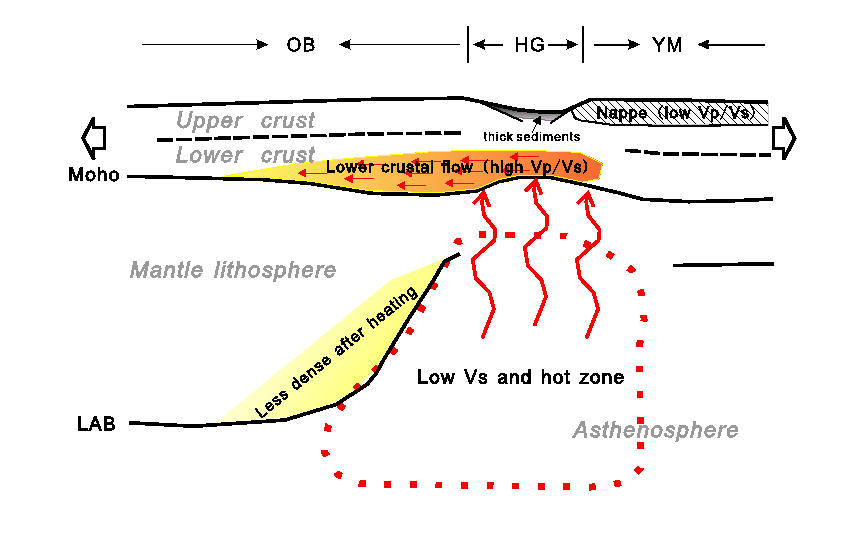Vice Professor TIAN Xiaobo, Professor TENG Jiwen and their teams research the structure of crust and upper mantle beneath the Ordos Block and the Yinshan mountains. They deploy a temporary seismological network of broadband three-component stations across the Ordos Block and the Yinshan Mountains.
P wave receiver functions reveal the Moho depth to be about 41km beneath the central Ordos Block and down to 45km beneath the northern Ordos Block, a slight uplifting to 42–43km beneath the Hetao Graben, increasing to 47–48km beneath the Yinshan Mountains and then decreasing to 44km beneath the northern Yinshan Mountains along the profile. In the Ordos Block, the crustal Vp/Vs ratio (about 1.80) south to the Hetao Graben differs from that (about 1.75) beneath the center Ordos Block. The crustal Vp/Vs ratio is significantly lower (about 1.65–1.70) beneath the Yinshan Mountains.
The P wave receiver function migration imaging suggests relatively flat discontinuities at 410 and 660 km, indicating the lack of a strong thermal anomaly beneath this profile at these depths, and a low S wave velocity anomaly in the upper mantle beneath the Hetao Graben.
They suggest that the low S wave velocity anomaly may be attributable to heat and that the thermal softening advances the evolution of the Hetao Graben, while the lower-crustal ductile flows transfer from the Hetao Graben to the northern Ordos Block, resulting in crustal thickening.
Tian et al. Structure of crust and upper mantle beneath the Ordos Block and the Yinshan Mountains revealed by receiver function analysis. Physics of the Earth and Planetary Interiors,2011,184:186-193.(Download Here)

Fig. Regional map showing locations of the broadband seismic station array (green triangles) across the Ordos Block and the Yinshan Mountains. (Image by TIAN Xiaobo)

Fig. The graphic illustrating the dynamic processes under the study area. OB, Ordos Block; HG, Hetao Graben; YM, Yinshan Mountains. (Image by TIAN Xiaobo)